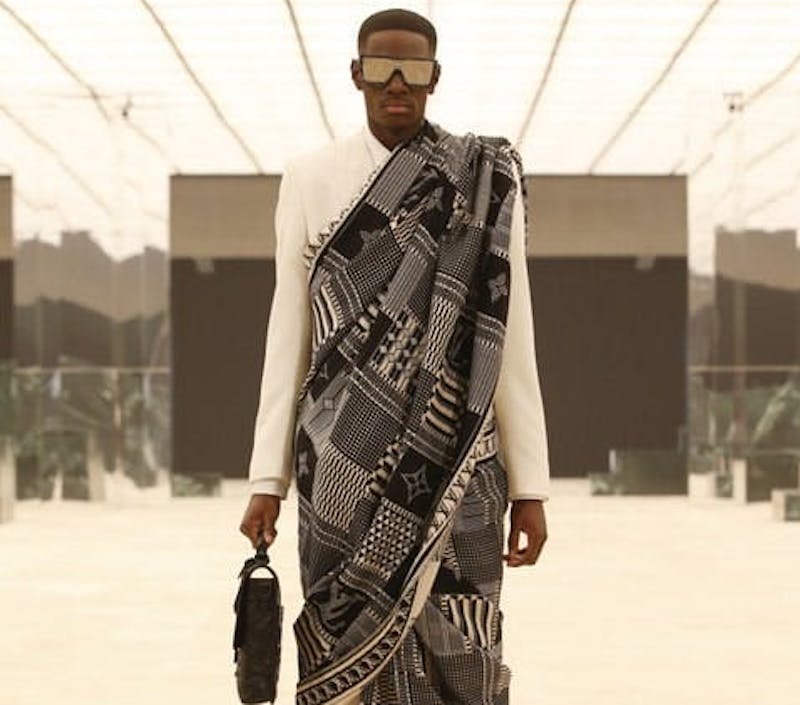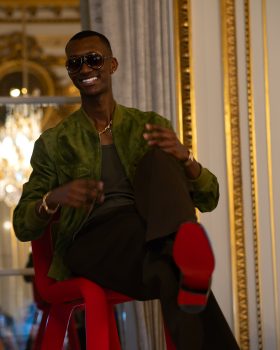Paris is famous as the epicentre of fashion: a city which celebrates the finest ateliers worldwide. As fashion historian Valerie Steele observes in her book ‘Paris: Capital of Fashion’: “The history of Paris fashion blurs inextricably into myth and legend.” As Paris Fashion Week SS21 gathers momentum, here’s a look at the history of Paris Fashion Week from Paul Poiret’s extravagant balls to Christian Dior’s New Look and Chanel’s legendary showings.
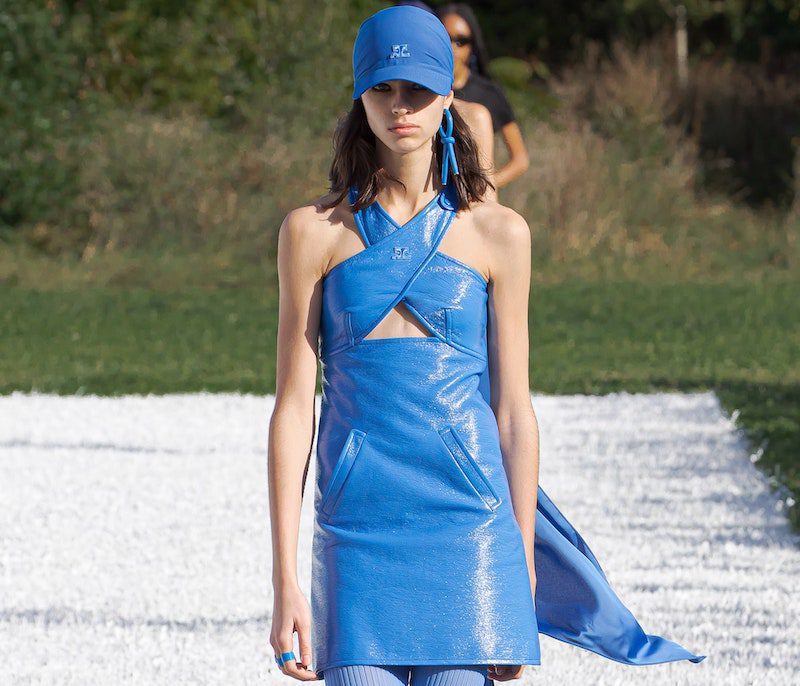
Courreges Spring Summer 2022
Rise of fashion in Paris
In the nascent days of Parisian fashion, designer Paul Poiret came up with the concept of a series of lavish balls where guests were invited to dress in their finest. One of the most notable was ‘The Thousand and Second Night’ held in 1911, where Poiret presented lampshade dresses and harem pants. Throughout the Twenties and Thirties, Paris became a hotbed of some of the most famous names in Fashion from Coco Chanel to Elsa Schiaparelli and Madeleine Vionnet. Fashion became a serious affair as each designer presented their collections on models, at client-only no-paparazzi soirees. Post World War II, Paris fashion shows become more regulated. In 1945, Chambre Syndicale de la Haute Couture laid down regulations that all couture houses had to present at least thirty-five looks each season. Paris was feeling nervous about the rising influence of New York fashion industry but in 1947, Dior’s first collection, Corolle, dispelled any apprehension with exaggerated silhouettes that became a rage worldwide. In the Sixties, another label to contend with, emerged: Yves Saint Laurent.
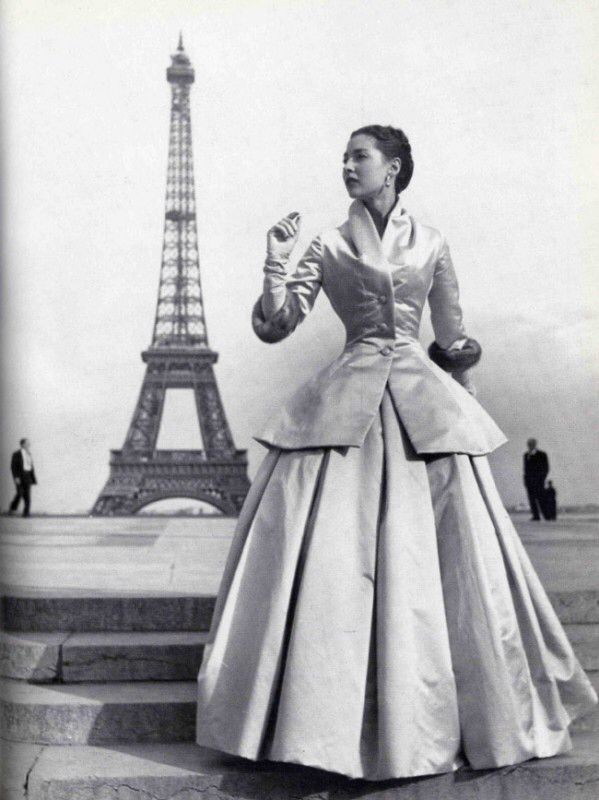
1947: Dior’s first collection, Corolle. Credit: www.pinterest.com/sierradonnell1/
The debut of Paris Fashion Week
Per Vogue, “The first official Paris Fashion Week happened in 1973 with the formation of the Fédération Française de la Couture, and opened with the game-changing Battle of Versailles Fashion Show. This fight — of the sartorial variety only — saw the historic tensions between Paris and New York fashion brought to life on stage as five of the biggest French designers were pitted against five unknown Americans.”
The fundraiser to restore the Palace of Versailles featured Yves Saint Laurent designer, Emanuel Ungaro, Christian Dior, Pierre Cardin and Hubert de Givenchy representing France and Anne Klein, Halston, Oscar de la Renta, Bill Blass and Stephen Burrows representing America. From then on, the shows became bolder and more theatrical, from Thierry Mugler‘s 1984 extravaganza to Jean Paul Gaultier’s conical bra which became famous when worn by Madonna. Chanel’s revival helmed by Karl Lagerfeld in the Eighties yielded memorable runway moments, while a new wave of Japanese designers like Comme Des Garçons led to revolutionary style. Today, Parisian shows are more dramatic with backdrops replicating train stations, airports and merry-go-rounds.
Menswear at Paris Fashion Week
Menswear is an important series in the Paris Fashion Week roster, with the biggest names in Fashion from Dior and Loewe to Louis Vuitton, Tom Ford, Burberry, Rick Owens, Celine, Dolce and Gabbana, Hermes and Lanvin showcasing the hottest trends in menswear, which in the ongoing men’s autumn winter 2021, reflects the growing focus on indigenous design, ethical fashion, inclusivity and brand heritage — a movement that has pressing momentum behind it as a new season of menswear offers an exciting insight into what a planet-friendly, inclusive fashion industry looks like. For example, Louis Vuitton explores racism, Loewe considers queer identity, JW Anderson endorses gender fluidity and individualism, and Dior was influenced by the brand heritage.
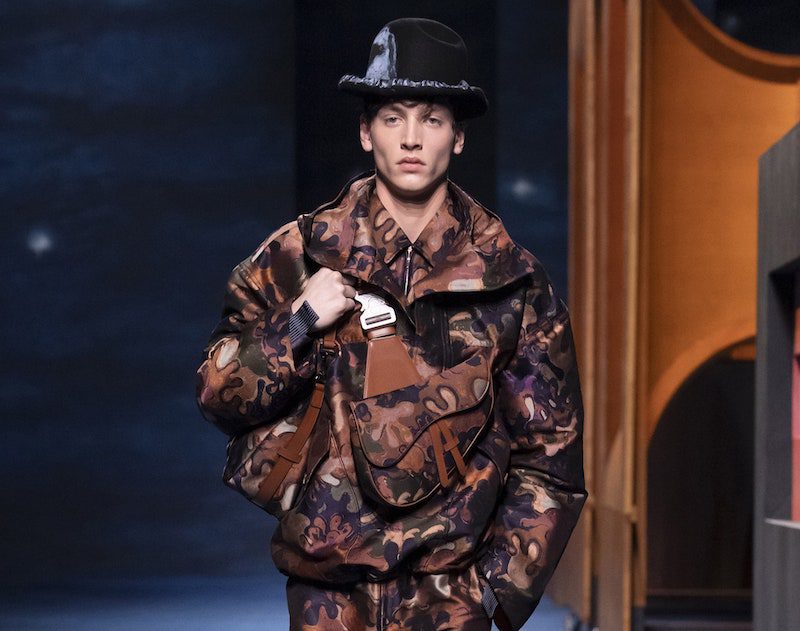
Dior Men’s Autumn Winter 2021
Jasmeen Dugal is Associate Editor at FashionABC, contributing her insights on fashion, technology, and sustainability. She brings with herself more than two decades of editorial experience, working for national newspapers and luxury magazines in India.
Jasmeen Dugal has worked with exchange4media as a senior writer contributing articles on the country’s advertising and marketing movements, and then with Condenast India as Net Editor where she helmed Vogue India’s official website in terms of design, layout and daily content. Besides this, she is also an entrepreneur running her own luxury portal, Explosivefashion, which highlights the latest in luxury fashion and hospitality.

